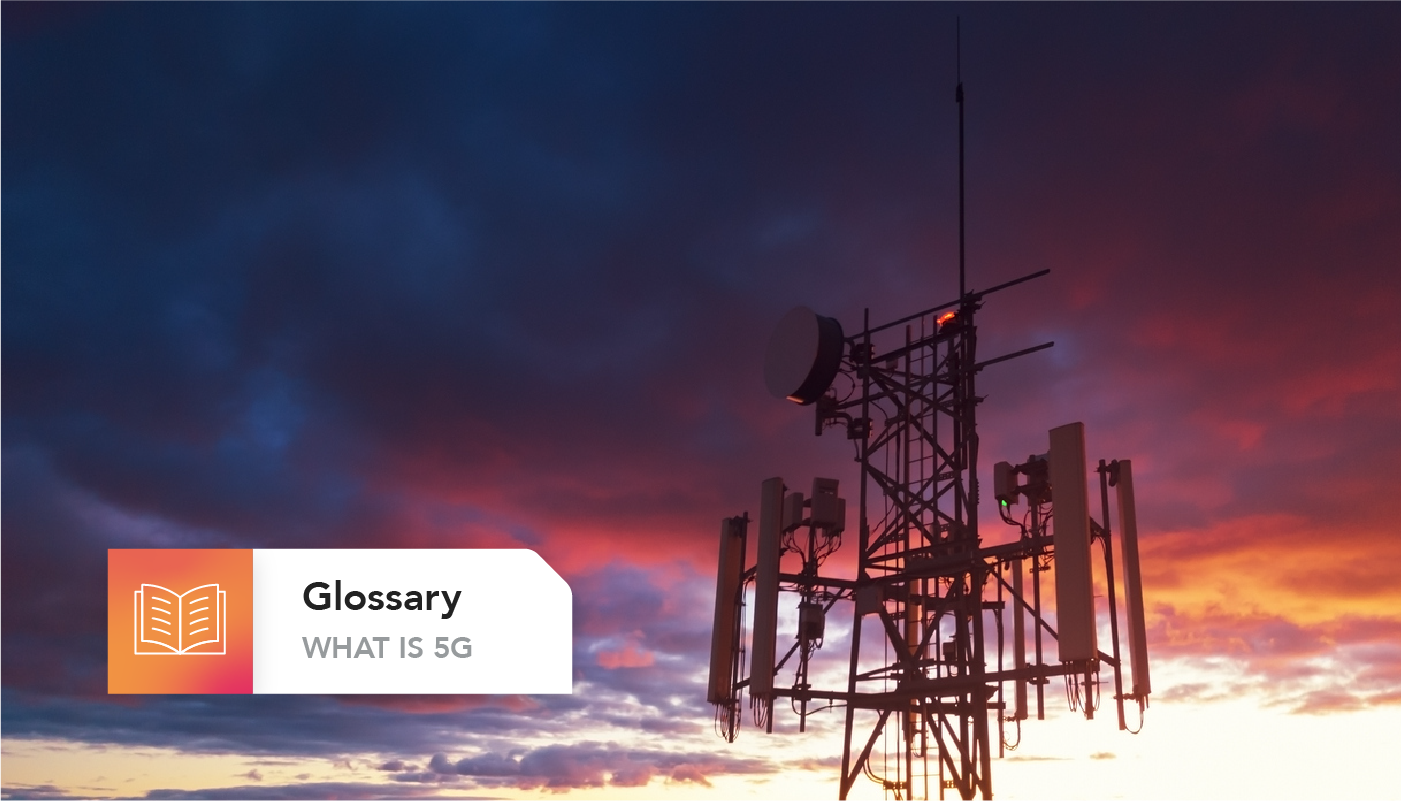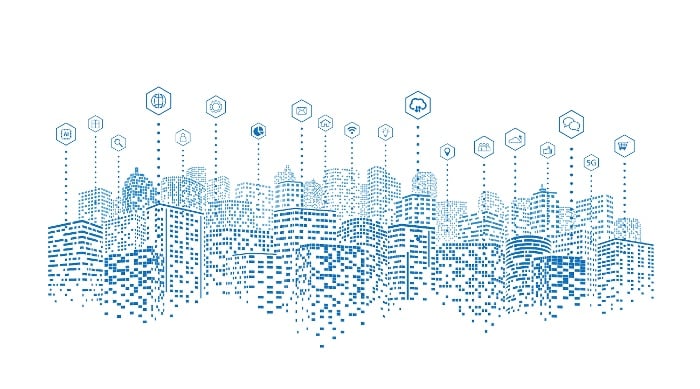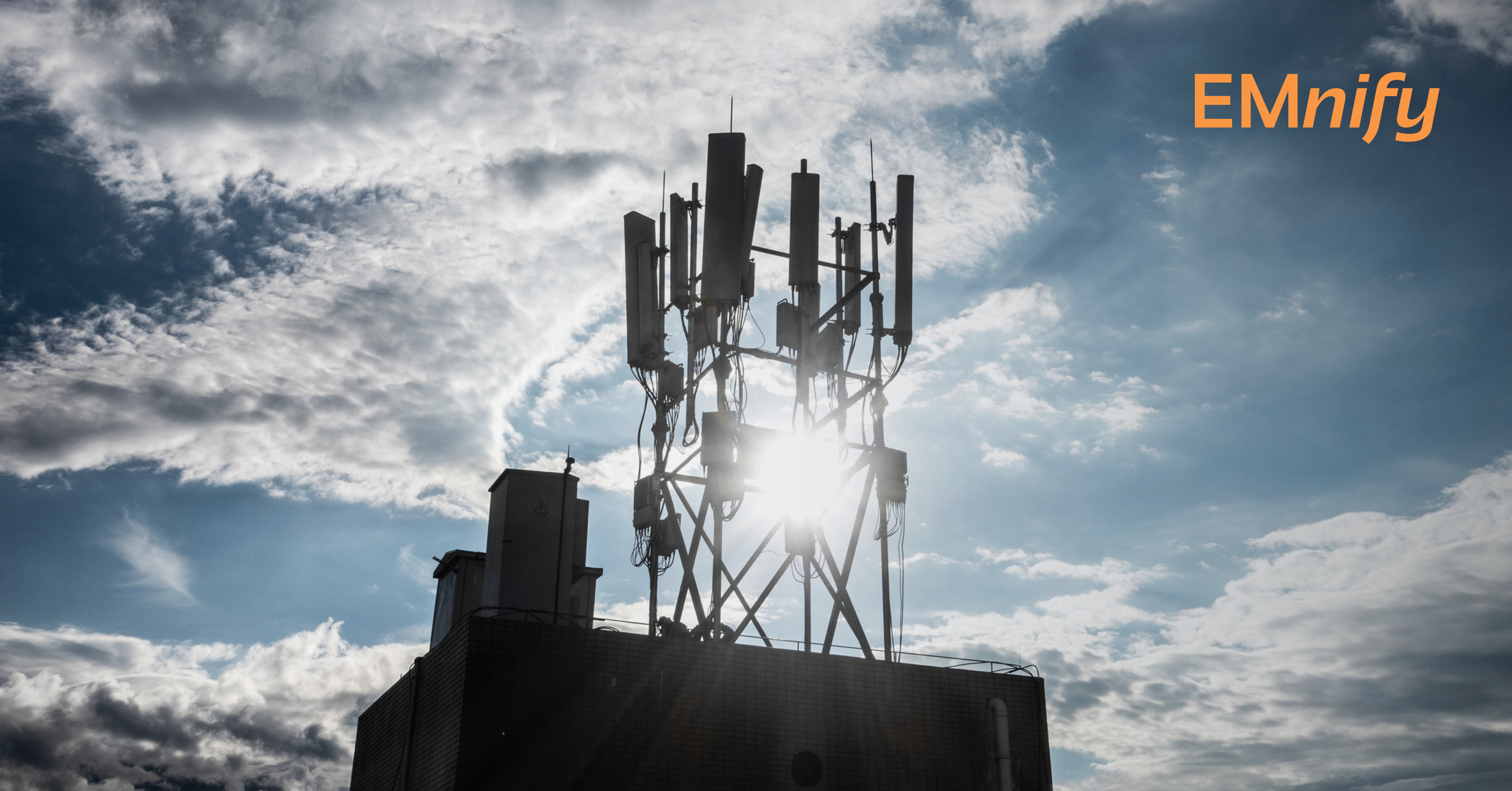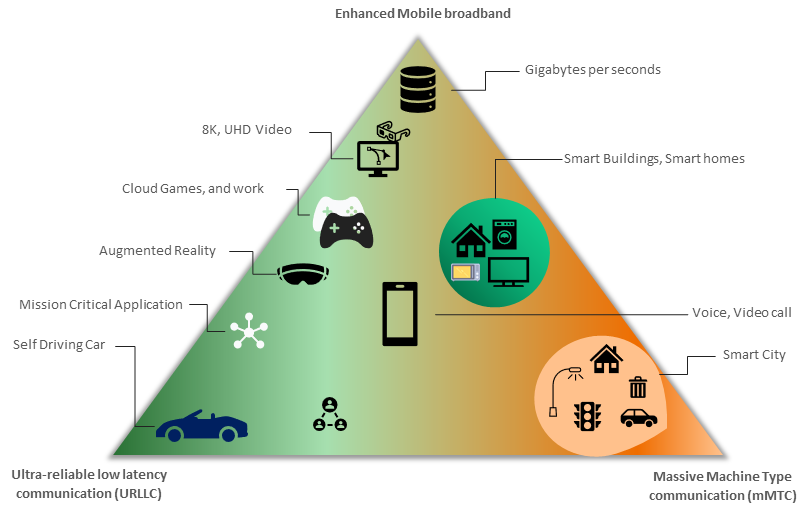

Connectivity has been the ultimate enabler of Industry 4.0, and in fact, it is at the heart of it. Secure wireless communication has empowered factory automation, large-scale production, and improved safety. Businesses require a different set of network performance parameter for their device connectivity in terms of throughput, transmission delay, packet loss, etc. Due to various functional requirements and use cases, the one-size-fits-all approach employed in 2G, 3G, and 4G, is not suited for a wide variety of applications. Therefore, connectivity service providers (CSPs) must tailor their network services based on the precise requirements of any given application, device, and user. 5G provides a multi-layer spectrum approach needed to address various 5G network service categories known as service grades.
What is wireless spectrum?
Wireless network connectivity is enabled by the magical part of the electromagnetic wave called radio waves that carries information between machines, systems, or things. Similar to how data is transmitted over wires, whether copper lines or fiber cables, data can also be transmitted over radio waves. The specific range of frequencies in the electromagnetic spectrum that consists of radio waves is referred to as the radio spectrum.
The radio spectrum allows us to transmit information wirelessly for a vast number of day-to-day services ranging from radio and television broadcasts, Wi-Fi and mobile phones to communications systems for baby monitoring, Asset tracking, emergency services, radar and GPS.
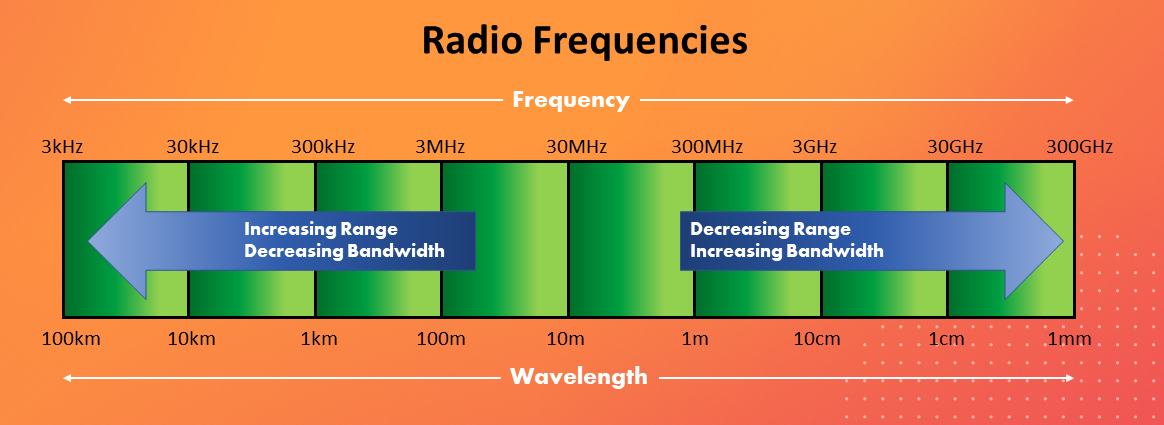

An overview of 5G Spectrum
Unlike existing radio access network technologies, 5G will be heavily reliant on the different portions of the spectrum to support wide range of usage scenario and applications. Operators will provide 5G services using a mix of low, mid and high frequency bands, which will play a key role in defining the speed, latency and the range of network coverage.

Low-Band
Low-band spectrum is defined as any spectrum with a frequency below 1GHz on the spectrum chart. It is also known as sub-GHz band. A decade ago, the low-band spectrum was in high-demand among operators as wireless carriers could serve thousands of customers within hundreds of squad km with just one cell tower. Wavelength of a Sub-GHz wave is longer than that of a 2.4 Ghz band because the wavelength is inversely proportional to the frequency.
Due to the longer wavelengths, signals can better penetrate through buildings, walls, trees and any other physical structure along the propagation path. They are also less susceptible to reflection and can bend around solid obstructions further via diffraction. Free space path loss is inversely proportional to the wavelength, meaning less path loss between two isotropic radiators for longer wavelengths. Therefore, the low bands have much greater range than the higher bands on the spectrum range.
A low-band spectrum will enable operators to provide a broad range of coverage in a 5G future, but it will also mean that the 5G network’s speed and latency will likely only be incrementally better than what is currently available on 4G networks.


Mid-Band
Mid-band spectrum, which ranges from 1GHz – 6 GHz, is best suited for 5G Ultra-reliable low latency communication (URLLC) and Enhanced mobile broadband (eMBB) use cases. With better longer range and indoor coverage than the high-band spectrum, the mid-band spectrum will be a perfect compromise between latency, coverage, throughput, and capacity.
According to GSMA whitepaper, most commercial 5G networks are relying on spectrum 3.3 to 3.8GHz range. Other bands that may be allocated or refarmed by the operators include 1500MHz, 1800MHz, 2.1GHz, 2.3GHz, and 2.6GHz. To maintain 5G quality of service and meet growing demand, more spectrum will be needed in the longer term (e.g. 3.3GHz to 4.2 GHz, 4.8GHz and 6GHz).

High-band
High-band spectrum that falls under millimeter wave spectrum (mmWave), will be best suited for Enhanced Mobile broadband (eMBB) services. High frequency bands are essential for provisioning and providing 5G ultra-high speed mobile broadband services which will not be possible without these frequency bands.
According to GSMA, the peak download speed expected would be at least 20Gbps and a reliable 100Mbps user-experience data rates in densely urban areas. The mmWave has certain limitation because signals cannot travel very far, in many cases the coverage is less than a mile. They are also highly susceptible to interference from trees, building, and even glass. But the biggest advantage of it is that it will allow 10-100 times higher speed than 4G. Due to the low coverage area, there will be many antennas deployed to cover a smaller neighborhood. This would also mean that such deployment would be expensive and slow.


What are 5G service grades?
To cater to customers’ different business models, 5G allows three service grades that may be tuned for special requirements:
-
Massive Machine Type Communication (mMTC)
-
Ultra-Reliable and Low Latency Communications (URLLC)
-
Enhance Mobile Broadband (eMBB)
IoT Applications of different 5G service grades
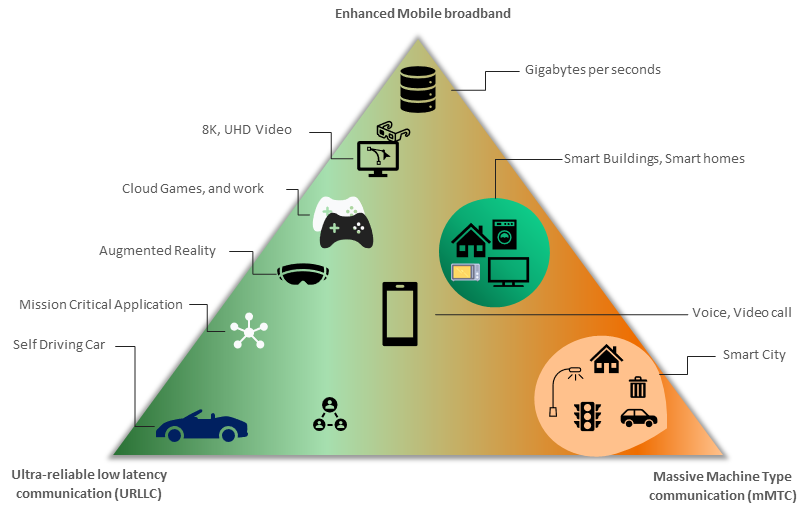

Massive Machine Type Communication (mMTC)
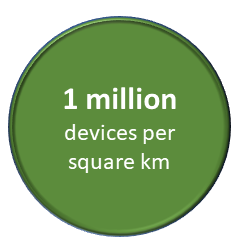
This category enables the use of the wireless network for massive Internet of Things (IoT) and machine-to-machine (M2M) applications without imposing burdens on other classes of services. 5G is a project to drive the evolution of smart cities and the IoT through the deployment of a large number of low-power sensor networks in both urban and rural areas.
Due to its security and robustness, 5G will be suited for public safety as well as mission-critical services such as smart grids, security services, police, electricity and water utilities, and healthcare. mMTC technology aims to provide connectivity to a large number of devices that normally transmit and receive small amounts of data infrequently, such as sensors. The key performance requirements for mMTC network service is to provide high connection density support of up to 1million devices per square kilometer, 10 times the maximum possible on LTE.
Ultra-reliable and Low latency communications (URLLC)
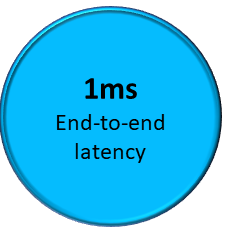
This category addresses critical needs communications where end-to-end latency is critical (1ms). It is also the most challenging category for 5G as it needs to meet the need for ultra low-latency and ultra-high reliability. Low latency optimizes the network to process large amounts of data with minimal latency.
5G ultra-low latency and reliability characteristics will benefit the evolution of intelligent transportation systems, allowing vehicle-to-vehicle communications, and paving the way for connected, autonomous cars and trucks. A cloud-based autonomous driving system must be able to stop, accelerate or turn an autonomous vehicle when instructed. A signal coverage loss or any network latency that prevents the message from being delivered could have catastrophic repercussions. Even though, after many pilot runs and trials, autonomous vehicles have a significant way to go.
Enhanced Mobile Broadband (eMBB)
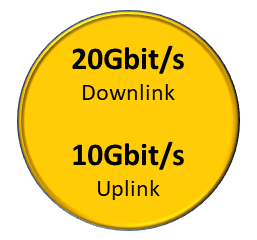
This category aims to service more densely populated metropolitan centers with peak downlink data rate of 20Gbit/s and uplink of 10Gbit/s. In the ITU-R report that defines the minimum requirements related to technical performance for IMT-2020 radio interface(s), the target value for downlink user-experienced data rates is 100Mbit/s while uplink is 50Mbit/s.
Wireless operators anticipate eMBB as the primary use case for 5G in its early deployment. It will offer high-speed mobile broadband to densely populated locations, allowing consumers to enjoy high-speed, on-demand streaming at home, on-screen and on mobile devices. It will also allow enterprise workplace collaboration to evolve. According to ITU’s IMT 2020 vision, eMBB is in fact an evolution of the data speed that we currently enjoy on LTE and LTE-M.
Conclusion
5G does more than just meet the evolving mobile needs of consumers by providing capabilities that are transforming industry verticals. Capturing a wide range of use cases from ultra-low latency to high density and capacity, 5G provides high flexibility and agility, allowing networks to offer customizable services to meet different customer requirements. Spectrum plays an important role in enablement of three service grades. Operators around the world will use a mix of low, mid and high band spectrums to cater to all types of customer demands. As per GSMA recommendation, governments, regulators and the mobile industry must cooperate to make 5G a success.
Get in touch with our IoT experts
Discover how emnify can help you grow your business and talk to one of our IoT consultants today!

Varun Patel
A seasoned professional with over 9 years of experience in telecommunications and IoT connectivity. Varun has a strong passion for technology and customer-centricity. He has driven innovation and created products that address real customer needs in the industry.
